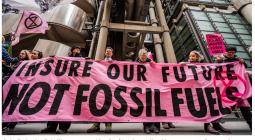It has also helped support initiatives such as the east London council’s microgrid development, a UK-first project that allows council housing tenants to buy discounted energy supplied directly by solar panels on their buildings thanks to an innovative localised electricity grid. Historically, solar panels on blocks of flats could only be used to supply electricity to the grid or to power communal areas. About 4,000 solar panels are being installed at 28 blocks across three estates in the borough. About 800 households will have the chance to sign up for the scheme, which will generate about 1MW of electricity, or a fifth of the blocks’ energy needs.
Caroline Woodley, the mayor of Hackney, said: “The carbon offset fund has played a crucial role in empowering our communities to take meaningful climate action. It has allowed us to help schools teach children about energy and the environment, support faith groups to make their buildings warmer and more efficient, and give charities the tools to cut costs and carbon at the same time.”
Kensington and Chelsea council is using all of its carbon offset funding – including that which has not yet been spent – to fund major retrofit projects at local schools and social housing estates.
A spokesperson said some of the borough’s schools were built more than 140 years ago and have poor energy efficiency. As such, they make up nearly 10% of the council’s greenhouse gas emissions, and the council plans to retrofit all of them.
The project will decarbonise heat systems by replacing gas boilers with heat pumps, installing new pipes to replace failed heating distribution systems and installing new windows and radiators.




